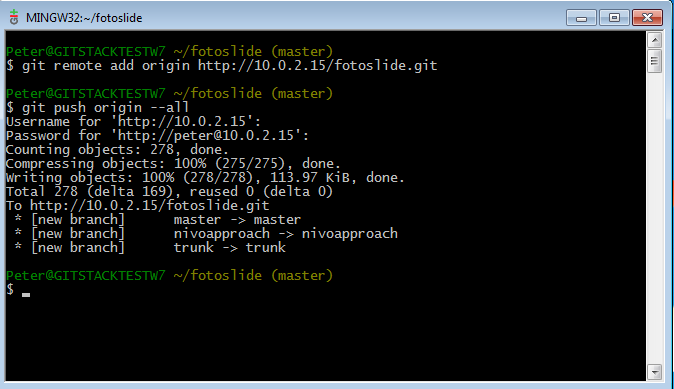
Once a release branch is given the green light for production, we close the branch, by merging it into master, applying a tag, and then deleting the branch. Our release branches are named in a SemVer format, e.g. This can be set by adding the following commands to our script. I have a project with a git branching model that roughly follows that of nvie's git-flow. Please check it out for more info, any improvement ideas are welcome. To start, we need to set the default identity that we want Git to run under. I want to share my Jenkins Pipeline Setup and my solution to publish changes/tags to git repo via SSH (While Git Publish Support is under development). You can find the repository permissions under the following URL: ).Įnsure this user has the following permissions:
git tag -faSetting PermissionsĪzure Pipelines automatically injects an auth token into your pipeline that is allowed to perform actions against Azure DevOps. For the first post, we will take a look at creating git tags from your pipeline. Still, if you want almost-pristine repositories, you need have a way. Imagine you pushed sensitive information: there is no way of hiding it back. If you made a mistake, and you pushed it, and you didnt have any way of stopping that from reaching the main repo, the right approach is to live with it.
#GIT TAG AND PUSH SERIES#

It pushes both commits and only tags that are both:

Quote from How do you push a tag to a remote repository using Git? - Stack Overflow stagePackageFiles ( localData, options ).
#GIT TAG AND PUSH FULL#
const flagForTag = signTag ? ' -sm ' : ' -m ' //. If you want to make sure that you cannot accidentally remove the branch instead of the tag, you can specify full ref which will never delete a branch: git push. Recommended that you create annotated tags so you can have all this information but if you want a temporary tag orįor some reason don’t want to keep the other information, lightweight tags are available too.Īs we can see, annotated tags are the tags that matter. They’re checksummed contain the tagger name,Įmail, and date have a tagging message and can be signed and verified with GNU Privacy Guard (GPG). Git supports two types of tags: lightweight and annotated.Ī lightweight tag is very much like a branch that doesn’t change - it’s just a pointer to a specific commit.Īnnotated tags, however, are stored as full objects in the Git database. Firstly, We will talk about lightweight tag and annotated tag. There are concepts beneath the questions. What’s the difference between git push -follow-tags and git push -tag?.Why my git tags cannot be pushed sometimes?.


 0 kommentar(er)
0 kommentar(er)
